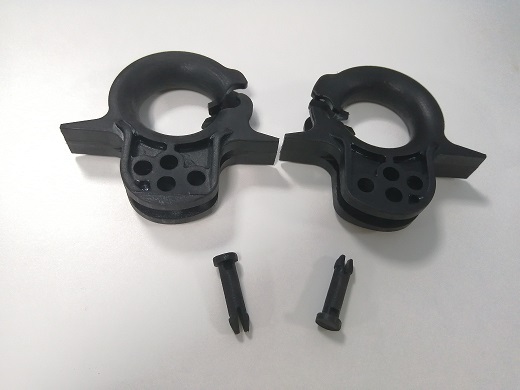Innovating with Precision: Understanding Prototype Molds!Posted by John on September 1st, 2023
In manufacturing and product development, precision and cost-efficiency are paramount. The processes of prototype mold creation, plastic injection molding, and selecting the right insert molding supplier play pivotal roles in achieving these goals. These techniques have revolutionized the manufacturing landscape, enabling the production of complex and intricate parts with unmatched accuracy. This article will delve into prototype molds, plastic injection molding costs, insert molding suppliers, and the factors influencing injection mold tooling costs. Prototype Molds: Pioneering Precision One of the critical advantages of prototype mold is their ability to accelerate the design iteration process. Designers can quickly identify potential flaws or improvements in their product design by cost-effectively producing multiple prototypes. This iterative process reduces development time and minimizes the risk of errors in the final product. Moreover, prototype molds enable manufacturers to gain valuable insights into material selection, structural integrity, and manufacturability. Plastic Injection Molding Costs: Balancing Quality and BudgetPlastic injection molding is a versatile manufacturing process that transforms raw plastic material into intricate components of varying shapes and sizes. While the process offers numerous advantages, understanding the factors influencing plastic injection mold cost is essential for maintaining a competitive edge in the market. The primary determinants of plastic injection molding costs include: Factors such as mold complexity, size, and material impact the tooling cost. Intricate molds with complex geometries demand more intricate machining and may require specialized materials. Material Selection: The choice of plastic material significantly affects the overall cost. High-performance engineering plastics are more expensive than standard materials but offer enhanced mechanical properties, chemical resistance, and temperature stability. Part Complexity: The intricacy of the part's design influences the production time, material wastage, and labor required. More complex parts may require additional steps in the molding process, impacting costs. Insert Molding Suppliers: Crafting Collaborative Partnerships Insert molding is an advanced technique where metal or plastic inserts are placed into the mold cavity before the injection molding process begins. This method offers numerous benefits, including improved part strength, reduced assembly steps, and enhanced design flexibility. Selecting the right insert molding supplier is crucial for achieving successful outcomes. Injection Mold Tooling Costs: A Calculated Investment Injection mold tooling costs are a significant consideration in plastic injection molding. These costs cover the molds' design, development, and fabrication that will ultimately produce the final parts. Understanding the factors contributing to injection mold tooling cost is essential for accurate budgeting and decision-making. The injection mold tooling cost is essential for accurate budgeting and decision-making.The main factors influencing injection mold tooling costs include: Mold Complexity: The intricacy of the mold design, including undercuts, threads, and complex geometries, directly impacts the machining time and complexity, thus affecting the overall cost. Cavity and Core Design: Molds with multiple holes or cores allow for higher production output but may increase tooling costs due to increased complexity. In conclusion, the manufacturing and product development world is undergoing a transformative phase, driven by innovative processes like prototype molds, plastic injection molding, and insert molding. While these techniques offer unparalleled precision and design flexibility, it's imperative to understand the factors that influence their costs. By carefully evaluating supplier expertise, embracing collaborative partnerships, and considering the intricacies of tooling costs, businesses can navigate the complex landscape of modern manufacturing while delivering high-quality products that align with their budgets and market demands. For detailed information about injection molding, click here Stebro Mold to explore the quality of plastic mold company in China. Like it? Share it!More by this author |



